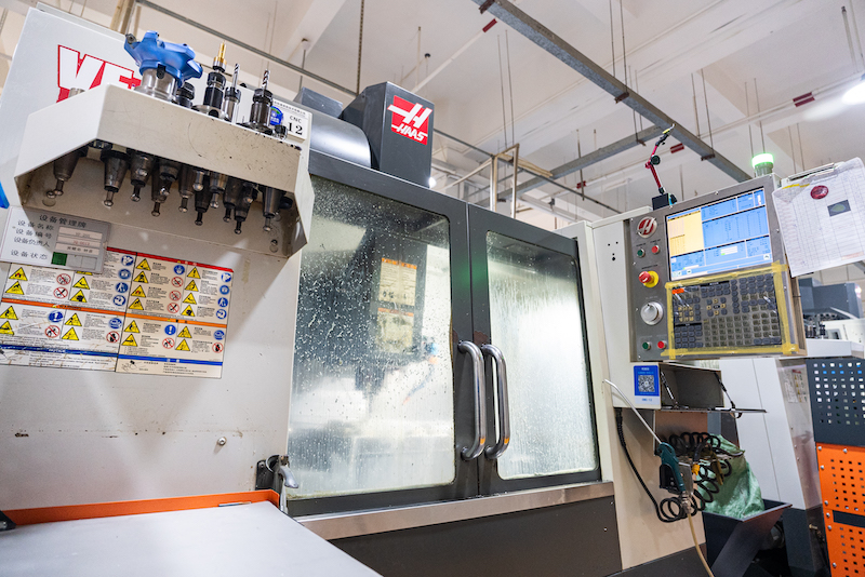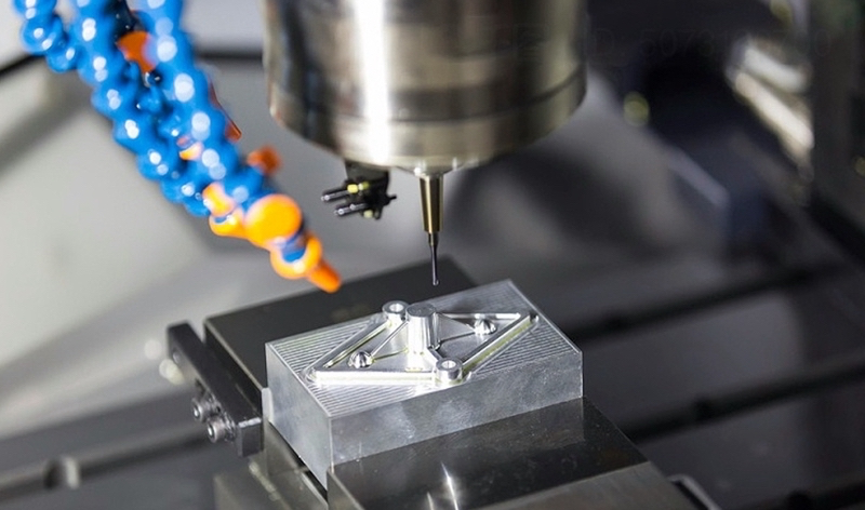The success of CNC machining parts is achieved through good toolpath planning and fixturing strategy. In 5-axis aluminum machining, poor toolpath planning and unstable fixturing are the most common causes of surface defects, dimensional errors, and long cycle times of the aluminum parts. With an appropriate approach to toolpaths and fixturing, machinists can enhance the surface finish, minimize the tool wear, and decrease cycle times.
This article focuses on two critical areas: how to optimize toolpaths for smooth, efficient multi-axis movement, and how to design fixturing setups that ensure rigidity without interfering with tool access. By addressing these core challenges, you can improve part accuracy, extend tool life, and reduce rework in complex aluminum part production.
1. Toolpath Strategies for Multi-Axis Efficiency
Proper toolpath generation is the key to successful 5-axis CNC machining. The primary focus is the minimization of unnecessary movement of the machine and ensuring that the cutter is engaged at all times. Adaptive clearing strategies are very effective in the case of roughing operations, particularly in the case of aluminum.
These strategies keep to constant values of chip load constant, reduce the tool wear, and eliminate sudden drops that burden both the tool and machine. They are particularly helpful for deep cavity machining, sculpted forms, or curved ones where stability and chip flow are more complex to accomplish.
In the case of finishing, making the right choice of strategy is equally important. The scallop, pencil, and parallel toolpaths contribute to the creation of smooth surfaces without overcuts and tool marks. Part orientation is critical in CNC machining parts to achieve dimensional accuracy. Appropriate tilt angles contribute to the provision of short tool stick-out and minimize vibrations. Rest machining is a clever way of working on unreached locations after roughing, where smaller machining tools are typically used to attend to details.
Finally, performing toolpath simulation in CAM software allows identifying possible collisions, over-travel, and access issues before the cutting process, making the cutting process safer and more predictable.
2. Fixturing for Stability and Accessibility
Fixing in 5-Axis CNC machining is not just a matter of holding the part but rather about affording free movement around all the axes. Due to the rotation and tilting of the workpiece by 5-axis machines, fixturing has to allow for angular clearance and continuous tool access. Poor clamping could cause too much vibration, dimensional errors, as well as tool crash. Precision workholding plays a crucial role in machining complex aluminum parts.
For aluminum parts, modular fixturing systems are useful in terms of flexibility. They can quickly be reconfigured between setups, and in particular, they are useful in prototyping or small-batch runs. Vacuum fixtures are another good choice for CNC machining parts with thin walls since they provide even holding pressure and reduce the chance of deformation. Vacuum systems, however, need a specially designed support structure and calibrated-to-aggression suction force to avoid the slippage of the part on the aggressive cuts.
Fixture height is also an important dimension. The workpiece needs to be raised to have five-axis access, especially where elements such as deep cavities or inclined undercuts are concerned. Custom soft jaws and self-centering jaws provide secure and repeatable clamping. Allowance for probing tools if in-process inspection is needed for the confirmation of tight tolerance.

3. Tooling and Feed Optimization
Tool selection is a key player in the success of 5-axis CNC machining aluminum. Solid carbide tools are rather sought after for their rigidity and resistance to heat. Polished tools, having high helix angles, help in rapid chip evacuation and prevent material buildup. This is important during the working of soft, gummy alloys. Coatings such as Titanium Diboride (TiB₂) or Zirconium Nitride (ZrN) amplify performance by reducing friction. These coatings are particularly effective at high spindle speeds when a lot of heat buildup may lead to premature wear of cutting tools.
When machining CNC machining parts, feed and speed optimization is key. Aluminum performs well at high amounts of spindle speeds, which are usually not less than 15,000 RPM and fast feed rates. However, these values should be in line with the tool diameter, flute count, as well as axial/radial engagement to prevent chatter/burning. Such dynamic tool paths as the high-efficiency milling keep the constant chip load and provide tool longevity.
Also, through-spindle coolant or air blasts directed into the cutting area remove chips from the cutting zone. This will minimize recutting, which in turn is one of the main causes of tool dulling during high-speed machining of aluminum.
4. Managing Heat and Chip Flow
Heat management is a big issue in 5-axis CNC machining, especially at high spindle speeds. Even though aluminum does a natural job of dispersing heat, insufficient chip evacuation can lead to heat accumulation in the localized area. This, in turn, culminates in dimensional drift, thermal expansion, as well as poor surface finishes. It is very important to reduce the amount of heat generated at the source and make sure that the chips are removed effectively in the machining cycle.

Toolpath strategies should be optimized to facilitate chip evacuation. Working on the part from top-down or machining from outside-in would result in better chips’ evacuation out of the cavity than getting stuck. This is vital in the processing of CNC machining parts that have deep pockets, enclosed dimensions, or internal parts. Methods such as spiral ramping and helical entries minimize the heat spikes by cushioning the entry of tools, as well as sustaining equitable engagements.
Coolant systems, be they through-spindle or external, have to be periodically checked for steady flow and pressure. Although MQL provides a benefit to the environment and cleanup, flood cooling is still the best bet when the lengthy contact of tools is involved. It improves thermal performance and longevity of tools, especially in harsh aluminum jobs.
Conclusion
Precision and efficiency in 5-axis CNC machining rely on smart toolpath strategies and well-designed fixturing. For CNC machining parts in aluminum, mastering these elements ensures tight tolerances, fast turnaround, and excellent surface finishes. With optimized feeds, adaptive roughing, and advanced workholding, manufacturers can tackle complex geometries without compromising reliability.

